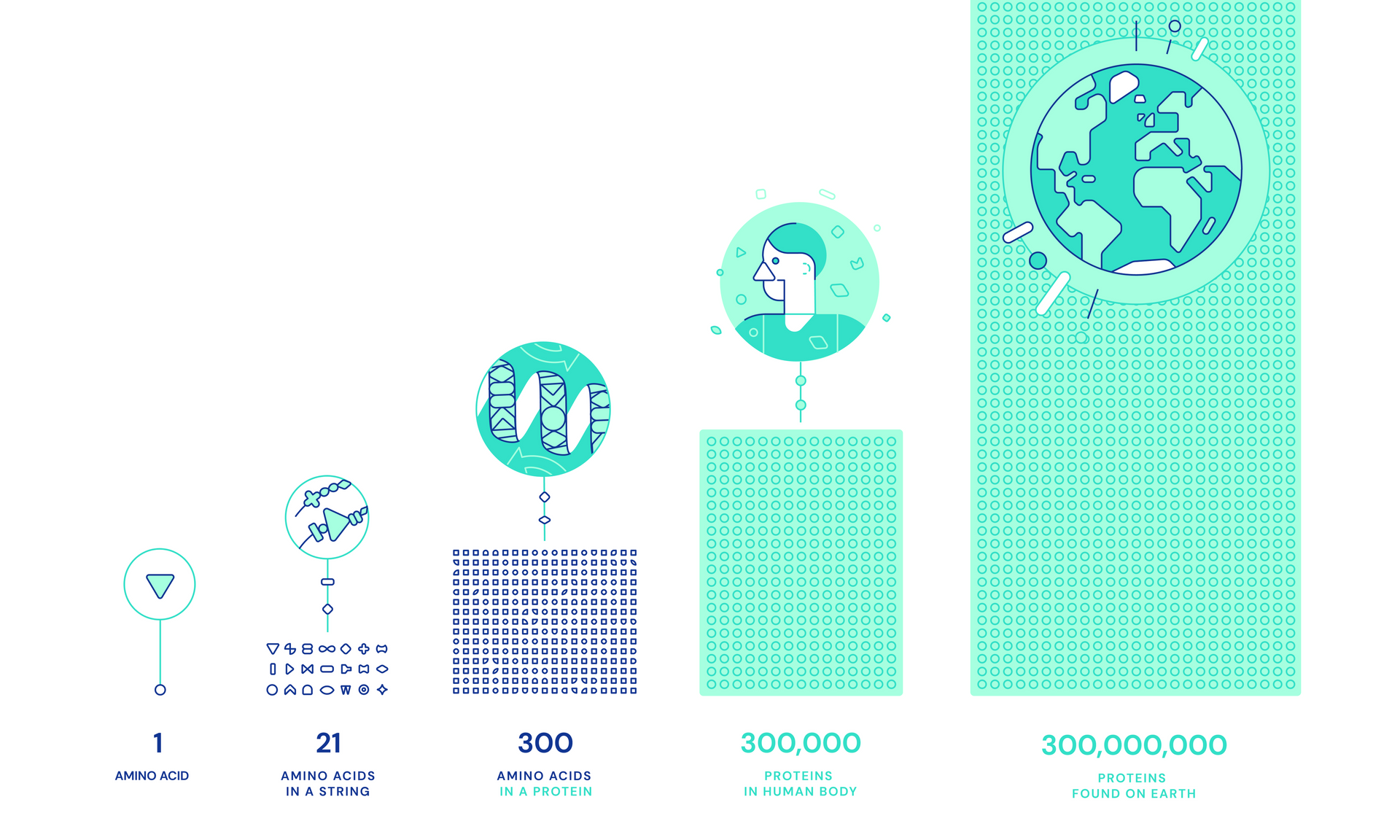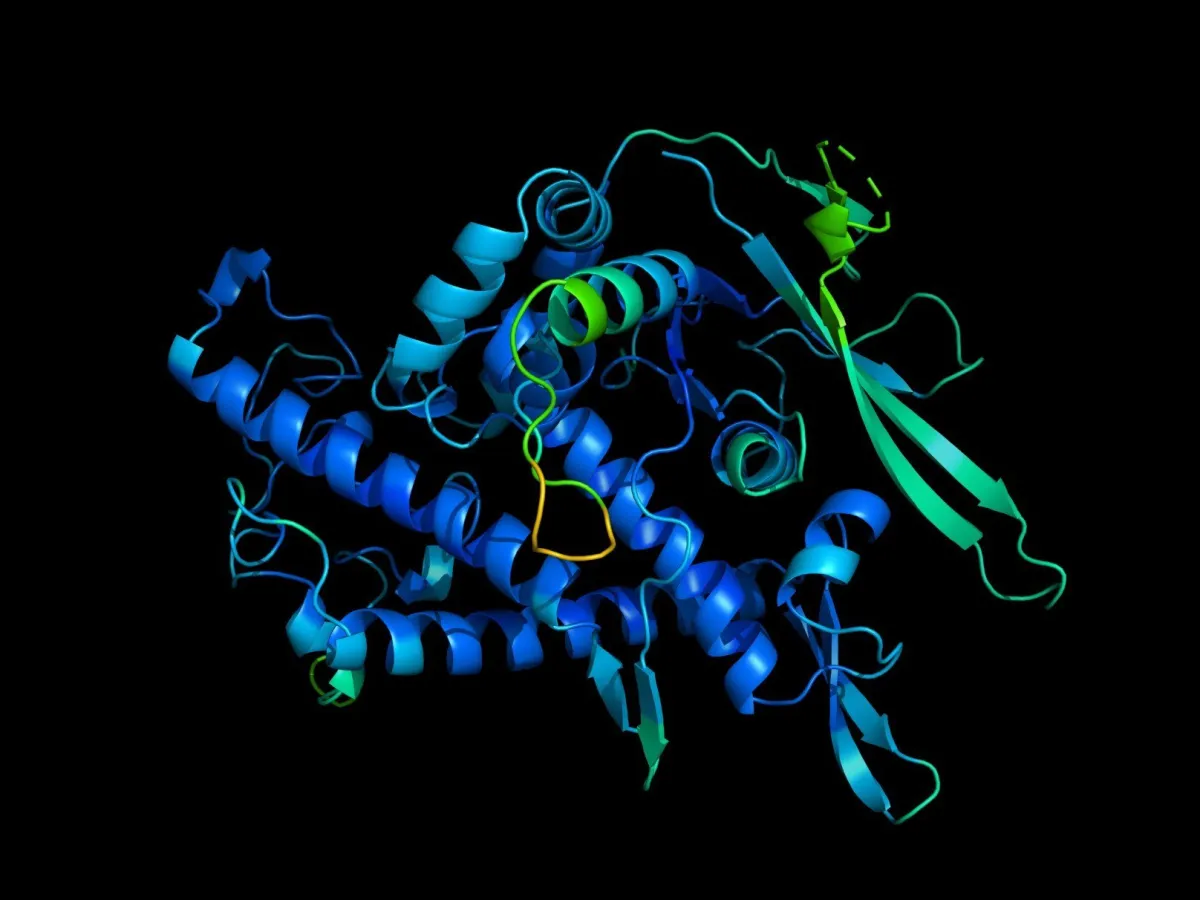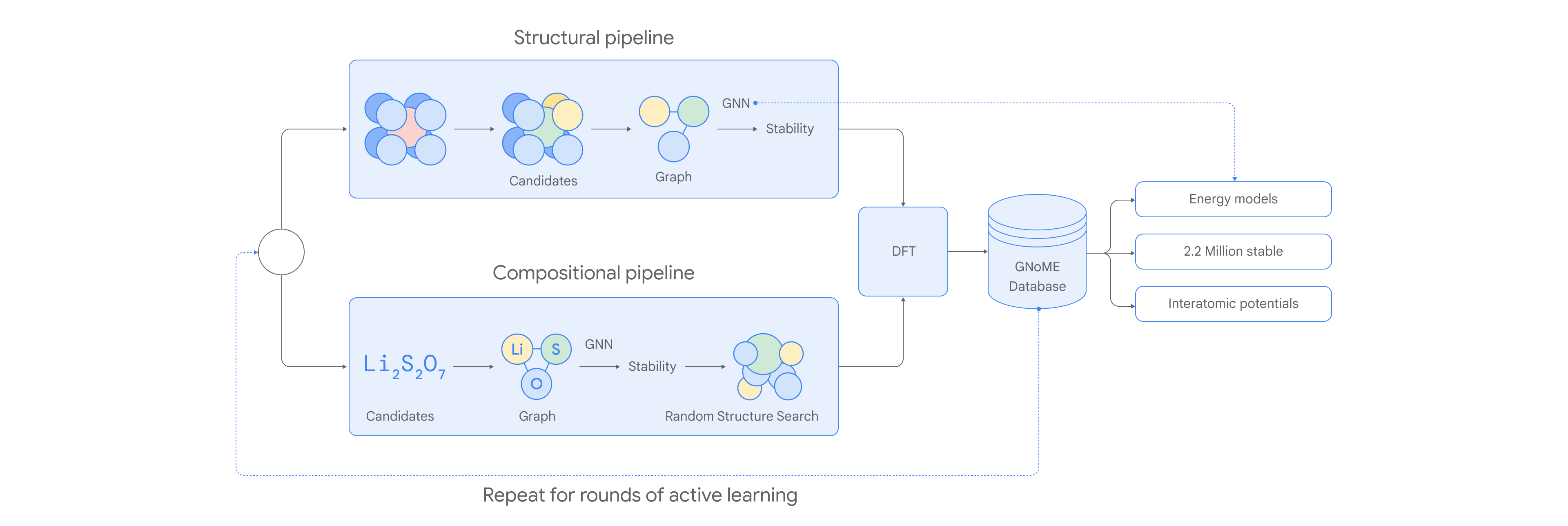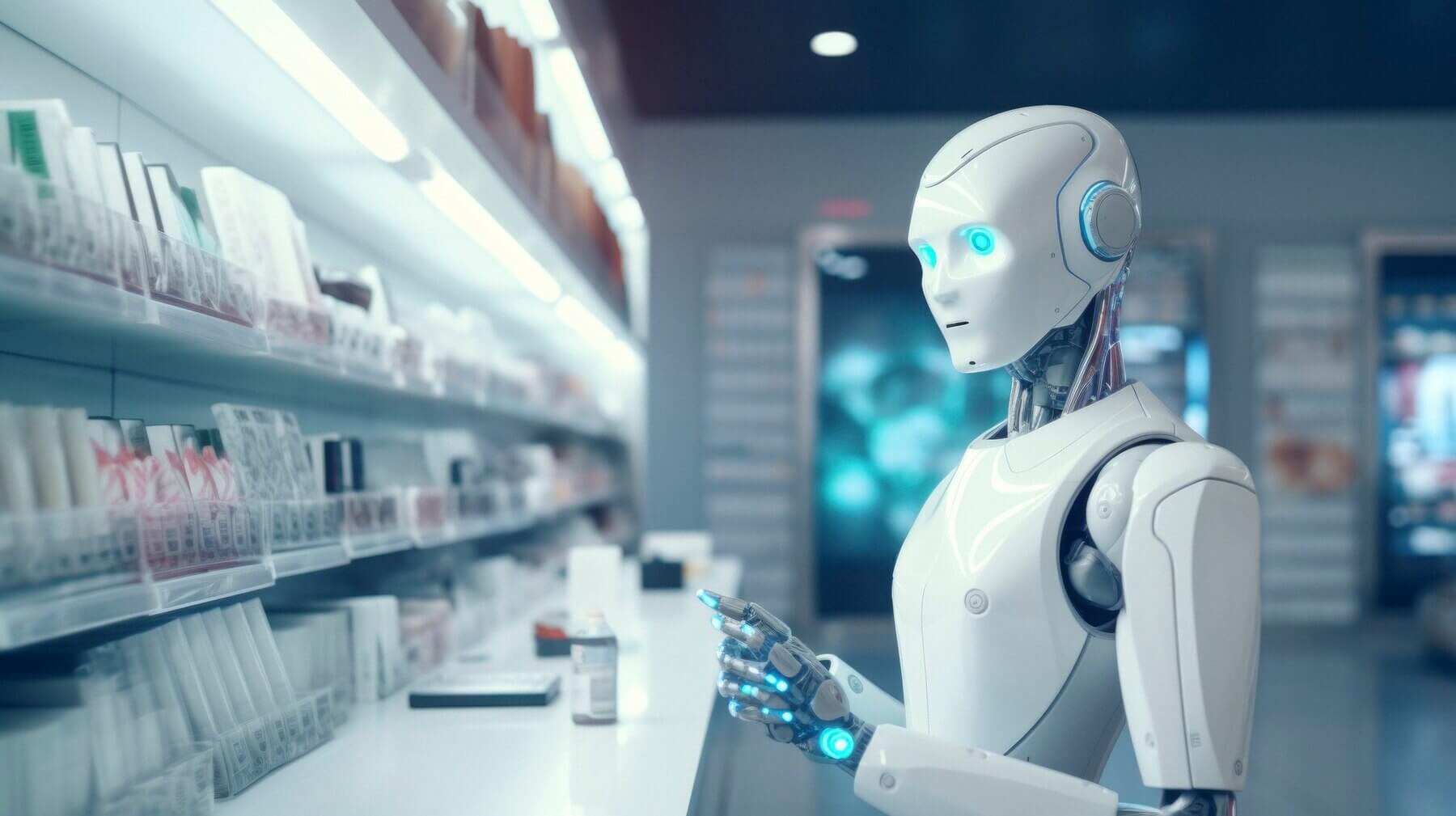
Scientific Discoveries Made with AI 🧬🧪
10 March, 2024
Artificial intelligence has become a driving force behind innovations across various industries. One area where AI is making a significant impact is scientific research. With the potential to revolutionize the way we conduct experiments and generate new ideas, AI could soon become an integral part of the scientific community.
Scientific Method Acceleration
The scientific method has been the cornerstone of scientific discovery and design for centuries, but with the advent of AI, we're seeing a new era of innovation and exploration.
AI algorithms can analyze vast amounts of data and identify patterns that may not be immediately apparent to human researchers. This allows for the generation of new hypotheses and ideas that may have taken years to discover.
Data Gathering
AI can help automate the data gathering process, reducing the time and resources required. This allows researchers to focus on interpreting and analyzing the data, rather than spending countless hours collecting it.
Experimentation and Control
AI can help optimize experiments by controlling variables and adjusting parameters in real-time, leading to more accurate and consistent results. This is especially useful in complex systems such as nuclear reactors.
Real-World Applications
These advancements have already begun to impact our everyday lives. Here are some examples of how AI impact:
- Drug Discovery. AI is being used to predict how molecules will interact with proteins, leading to the discovery of new drugs and treatments.
- Material Design. AI is helping design new materials with unique properties, such as being robust and stiff, making them ideal for construction and engineering applications.
- Nuclear Fusion. AI algorithms have been used to control tokamak simulators, making the safe operation of nuclear fusion reactors less dependent on human intuition and experience. This could lead to the development of cleaner, safer, and more efficient energy sources.
AlphaFold Revolutionizes Protein Discovery
Google's DeepMind AI accelerates biological research, potentially saving billions of dollars and centuries of progress.
In the realm of biology, understanding proteins – the tiny molecular machines that power life – is key to discovering innumerable secrets and solving critical problems. But until recently, deciphering their complex 3D structures was a time-consuming and costly endeavor. Enter AlphaFold, the groundbreaking AI system from Google DeepMind that's disrupting the field and fast-tracking research like never before.

Imagine condensing years of research into a single weekend. Sounds like science fiction, right? Well, not anymore! AlphaFold has made this a reality by predicting the 3D structures of proteins with astonishing accuracy. This technological marvel has effectively bypassed the need for laborious and expensive experiments, potentially saving the scientific community billions of dollars and up to a billion years of progress.
From Single-Use Plastics to Cancer Treatments
AlphaFold's impact is already being felt in various fields of biology. Researchers are using this revolutionary tool to:
- Break down single-use plastics by understanding the proteins responsible for degradation.
- Solve biological puzzles by shedding light on previously unidentified protein structures.
- Develop new drugs to treat liver cancer and other diseases by targeting specific proteins.

In the spirit of fostering collaboration and accelerating progress, AlphaFold's predictions are freely available to scientific community through the Protein Structure Database. By democratizing access to this groundbreaking tool, Google DeepMind is empowering researchers worldwide to tackle some of the most pressing challenges in biology.
With AlphaFold leading the charge, the future of biological research is brighter than ever. As we continue to unravel the mysteries of life's building blocks, AI-driven tools like AlphaFold will undoubtedly play a crucial role in shaping the next generation of discoveries.
AI Reveals 2.2 Million New Crystal Structures
Another breakthrough has also been developed by researchers at Google and the Lawrence Berkeley National Laboratory.
Modern technology relies on inorganic crystals, but discovering new viable structures through experimentation alone can take decades. Now, a new deep learning tool called GNoME is accelerating materials discovery at an unprecedented scale.

GNoME has predicted over 2.2 million previously unknown crystal structures using graph neural networks. Of these, 380,000 structures are deemed highly stable - a major breakthrough that multiplies our knowledge of viable materials.
To put this discovery in context, experimental methods have uncovered around 28,000 new materials over the past decade. GNoME's findings are equivalent to almost 800 years of traditional discovery. It shows the huge potential of AI to guide exploration and take materials science to new frontiers.
The predicted structures hold promise across various applications. For example, GNoME uncovered 52,000 new layered compounds similar to graphene, offering hope for revolutionary electronics. It also identified 528 potential lithium ion conductors - 25 times more than before - paving the way for longer-lasting batteries.

By leveraging graph neural networks, GNoME overcomes prior limitations to yield the largest, most accurate materials predictions to date. Its findings represent a major step towards sustainable innovation through AI-augmented crystal engineering. With further refinement, GNoME may guide our transition to a greener, technology-enabled future.

New Battery Material Found Through AI and HPC
Computing advances are accelerating scientific discovery at unprecedented speeds. Microsoft and Pacific Northwest National Laboratory (PNNL) are collaborating to demonstrate this using advanced AI and cloud computing for materials science and chemistry. PNNL scientists are testing a new battery material identified in just weeks through this partnership.
As part of the effort, Microsoft's Quantum team used AI to screen over 500,000 stable materials in days. The new battery material came from using Microsoft Azure Quantum Elements to reduce 32 million potential inorganic compounds to 18 promising candidates for battery development in just 80 hours.

Microsoft first trained AI models to rigorously evaluate all possible element combinations and propose candidates. 32 million were identified - like finding needles. AI then determined which were stable, reactive, and conductive. The ideas weren't to find every needle but the best ones. Microsoft's AI whittled the candidates down to 500,000 new stable materials, then 800. At each step, AI calling was up to 500,000x faster than full simulations.

For greater accuracy, the top candidates underwent high-performance computing density functional theory and molecular dynamics simulations analyzing atomic movements. This collaboration demonstrates how AI and HPC can revolutionize materials discovery, speeding solutions for sustainability and healthcare challenges.
AI ChatBots as Hypothesis Hunters

Imagine an AI system that can analyze thousands of scientific papers spanning decades and generate new, exciting ideas for future research. This is precisely what researchers like Hannaneh Hajishirzi at the Allen Institute for Artificial Intelligence in Seattle are working towards. By developing advanced AI systems akin to ChatGPT, they aim to create a tool that can crunch vast amounts of scientific literature and propose innovative hypotheses.
These AI hypothesis hunters could potentially uncover connections between studies that might have gone unnoticed by their human counterparts. The result? A new era of scientific discovery driven by the combined power of human and artificial intelligence.
AI Conducting Independent Research
But what if AI could do more than just suggest new ideas? Yolanda Gil, a researcher at the University of Southern California, envisions a future where AI systems can plan, conduct, and analyze experiments entirely on their own. This bold vision would require the development of new AI models capable of reasoning and decision-making beyond the current state-of-the-art.

While autonomous AI scientists might sound like the stuff of science fiction, the potential benefits are immense. Gil believes these AI systems could continuously reanalyze data and provide real-time updates on pressing issues like diseases or environmental change. This constant vigilance could lead to a more proactive and adaptive approach to scientific research, with AI scientists working tirelessly to keep us informed and prepared.
The Rising Role of AI in Scientific Discovery
Artificial intelligence is playing an increasingly important role in advancing scientific research and discovery. By analyzing vast amounts of data, identifying patterns, and making predictions, AI is helping scientists accelerate progress across many fields. Some experts believe that within this decade, AI may even start conducting independent investigations and making original discoveries without direct human guidance.
While human intelligence and creativity will remain essential, AI promises to act as a powerful collaborator and inspiration for scientists. It has the potential to sift through literature, data, and experiments at a scale and speed that no individual researcher could match. By identifying complex relationships and connections that may not be immediately obvious, AI could point scientists towards new insights and hypotheses worth exploring.

Future of Autonomous Scientific Discovery
Looking ahead, some experts envision AI becoming even more autonomous and proactive in driving new research questions. There is excitement about AI's potential to develop its own knowledge by reading scientific papers, data, and literature without specific direction. It may be able to connect insights across disciplines like chemistry, biology, and medicine in ways that generate novel hypotheses worthy of investigation.
For example, AI could comb through publications on molecular properties, biological pathways, clinical symptoms, and more to propose a new molecule for treating Alzheimer’s disease. Such a discovery would require identifying indirect relationships and shared principles across multiple domains - something that is essentially impossible for humans but may become feasible at scale through advanced AI systems.
Of course, realizing AI’s full potential also requires addressing important issues around oversight, ethics, bias, replicability, unintended consequences and ensuring technology benefits all of society. With care and guidance, many experts believe AI has the power to massively accelerate the pace of scientific progress and discovery for the betterment of humanity. The collaborative relationship between AI and human scientists has the potential to unlock solutions to our world's greatest challenges at an unprecedented pace.
Challenges to Overcome
Several important challenges must be addressed for AI to reach its full potential in scientific research. On the machine learning side, current algorithms have limitations in integrating diverse, multimodal data types that provide a holistic view of scientific problems. Data comes in many forms - text, images, sequences, structures - and consolidating these is difficult yet necessary for comprehensive analysis.
Models also still operate largely as "black boxes" without full explainability, which conflicts with the empirical foundation of science. More transparent and interpretable deep learning is needed.
Another issue relates to interdisciplinarity. Most breakthroughs arise at the intersection of fields, but scientific teams traditionally consist of specialists from a single domain. New modes of collaboration are required, bringing together experts from varying specialties like engineering, computer science, the social sciences, and beyond. Involving outside perspectives from industry, government, and broader society will also be important for managing risks from societal, economic, and political viewpoints.
Automating Routine Work
Automating routine laboratory work through AI and robotics could free up scientists to focus on more engaging and impactful tasks. A significant portion of research time is currently spent on repetitive experimental procedures, documentation, data entry, and other pipeline activities. This "grind" takes scientists away from higher-level thinking, analysis, and development of new hypotheses. With AI assisting in automation, scientists could offload these day-to-day tasks and focus their expertise where it is most valuable.
An exciting vision is the concept of "human-in-the-loop" research environments, where routine experiments are guided autonomously based on AI model predictions and recommendations. Robotic systems could perform standardized laboratory workflows at scale, feeding data continuously back into the AI for analysis. This creates a virtuous cycle where computation and physical experimentation reinforce one another. The end result would be self-driving "labs of the future" that multiply researchers' effectiveness through enhanced tools and new modes of collaboration between humans, machines, and scientific workflows.